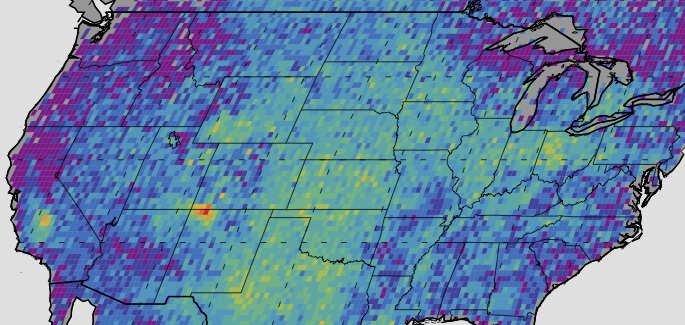Well, this isn’t good: Researchers have discovered a massive “hot spot” of methane emissions above the southwestern U.S. As pictured above, it stretches 2,500 square miles over New Mexico, Colorado, Utah and Arizona. It’s the size of Delaware, and more than triple the size of previous estimates.
Methane, a greenhouse gas, is some 34 times more potent than carbon dioxide over a century and even more damaging to the climate in the short term. Over the seven-year period measured, the hot spot produced about 10 percent the EPA’s estimation of all U.S. methane emissions. It’s currently producing the rough equivalent of all the methane being produced by the U.K.’s entire oil, gas and coal industry.
The methane cloud, detailed in a study by NASA and University of Michigan scientists, was actually discovered years ago, but researchers assumed it must have been a mistake. “We didn’t focus on it because we weren’t sure if it was a true signal or an instrument error,” Christian Frankenberg of NASA’s Jet Propulsion Laboratory explained in a statement. Using satellite data, the team calculated that the area released about 0.59 million metric tons of methane into the atmosphere each year from 2003 to 2009.
It’s important to note that this isn’t a fraccident: the emissions were measured before fracking took off in the region. Eric Kort, the study’s lead author, said they should instead be attributed to leaks from production sites in New Mexico’s natural-gas rich San Juan Basin.
“The results are indicative that emissions from established fossil fuel harvesting techniques are greater than inventoried,” Kort explained. “There’s been so much attention on high-volume hydraulic fracturing, but we need to consider the industry as a whole.”
It’s a good reminder that it’s not just “unconventional” drilling techniques like fracking that are bad news. Plain old-fashioned oil and gas extraction has significant problems too — even before we start talking about the pollution that comes from burning the stuff. What these new findings show is that we’ve significantly underestimated the methane emissions from our energy infrastructure as a whole.

